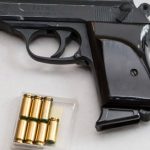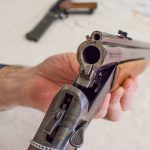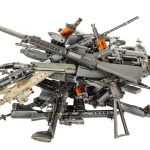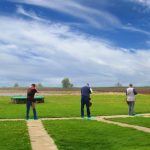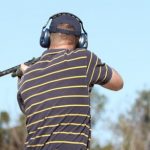The Massacres That Led to Tighter Gun Control in Australia
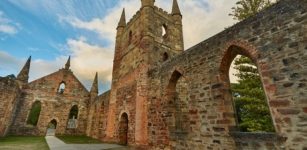
The National Firearms Agreement (NFA) established tighter firearm control laws back in 1996. This led Australian gun laws to become the envy many other countries. But over the following twenty years, these laws have slowly been eroded.
And this has much to do with the current Coalition government having gotten into bed with the gun lobby.
In October last year, Australian Greens Senator Lee Rhiannon and NSW Greens MLC David Shoebridge released minutes from two meetings held between Australian justice minister Michael Keenan and a firearms industry reference group.
These meetings took place in August and September 2015 at the same time the government was reviewing the NFA. They focused on broadening firearm importation regulations and removing limits on gun ownerships.
In March this year, the Turnbull government quietly published the 2017 National Firearms Agreement. There was no public announcement about it – the document simply appeared on the attorney-general’s website.
A continuing erosion
Senator Rhiannon told Sydney Criminal Lawyers® last month the new agreement is a further watering down of the nation’s guns laws.
It has paved the way for NSW legislation which, among other things, makes it easier for those subjected to Domestic Violence Orders to get their guns back, and gives greater access to high-powered self-loading long-arms. It also paves the way for the importation of the Adler shotgun.
The changes add to other dilutions of gun control laws in recent years.
Currently, Gun Control Australia are running a campaign to raise funds so they can conduct a national gun audit to ascertain how each of the state and territory jurisdictions have weakened their gun laws over the last two decades.
So it seems like an opportune time to remember that when the NFA was brought into effect, it was in response to a series of major Australian shooting sprees that took place over the space of a decade – the likes of which the nation has never subsequently seen.
The Hoddle Street Massacre
It was slightly after 9 pm on 8 August 1987, when 19 year old Julian Knight opened fire into oncoming traffic on Hoddle Street in the Melbourne suburb of Clifton Hill. The former Australian army cadet randomly killed seven strangers and seriously injured 19 more.
A few months prior, Knight had been expelled from the Royal Military College of Duntroon for stabbing a sergeant. On the night of the subsequent tragedy, Knight was depressed about the end of his military career. He drank ten pots of beer at the local pub, before heading home to collect his weapons.
The arsenal Knight had lying about the house consisted of a pump-action shotgun, a .22 rifle and an M14 automatic rifle. He then positioned himself on a raised platform behind a billboard on the corner of Hoddle and Ramsden streets, and let loose.
At the time, the Australian mainstream public was unaccustomed to such large scale tragedies. Frontier wars had raged across the continent in the past, but these had been neatly written out of the history books back in the 1980s.
It later came to light that Knight had suffered extreme bastardisation at the hands of more senior cadets whilst in the military. He’d been told to keep quiet about it, as part of his plea bargain. In 2015, a Canberra nurse came forward and said she’d witnessed the military abandon the young man.
The tragedy few remember
On 16 January 1991, Wade Frankum – a taxi driver from North Strathfield – bought himself a 7.62mm SKS self-loading assault rifle, and a hundred rounds of ammunition. In August that same year, the 33-year-old killed eight people, including himself, and injured another six.
There was nothing about Frankum to give any warning signs that he might carry out an incident like the Strathfield massacre. It’s often noted that he read Bret Easton Ellis’ American Psycho – which goes into graphic detail about a series of murders – but a lot of other people read the novel at the time and didn’t go on to commit crimes.
It was just after 3.30 pm on 17 August, when Frankum finished drinking his fourth coffee at the Coffee Pot café in Strathfield Plaza. He then stood up, pulled out his bowie knife and repeatedly stabbed 15-year-old Roberta Armstrong – seated at the next table – to death.
The killer had never met the girl before.
Frankum had placed his semi-automatic in a postpak to conceal it. He’d bought the 10-round rifle at Smith’s Sports Store in the city, after he’d obtained his shooters licence the year prior.
The taxi driver pulled out his rifle and opened fire on the people in the café, killing three. Frankum stormed through the mall killing another three people. He then made his way to the rooftop carport and hijacked a car. On hearing police sirens, he got out and shot himself in the head.
Port Arthur
The gun massacre that really brought a nation to a standstill was that perpetrated by Martin Bryant – a 28-year-old man from Hobart – at Port Arthur, the site of a notorious colonial-era penal colony.
On 28 April 1996, Bryant killed 35 people and wounded 23 more at the tourist destination, using his AR-15 rifle with a 30-shot magazine. The killing spree became the worst single-person mass shooting in Australian history, and the third worst in recorded history worldwide at the time.
Bryant began the day by killing the elderly owners of a guesthouse, who’d refused to sell his father their business. He then went to the Broad Arrow Cafe and ate lunch, before opening fire with his semi-automatic.
Within just 15 seconds, Bryant was able to fire 17 shots that left 12 people dead and another 10 injured.
The laws that put an end to it
Port Arthur was the final straw. Twelve days after the massacre, then prime minister John Howard announced a sweeping package of gun law reforms that became known as the National Firearms Agreement. Although many don’t like to admit it, it seems the PM’s policy decision was worthwhile.
The NFA outlawed automatic and semi-automatic rifles, along with pump-action shotguns. And a nationwide buyback scheme saw 640,000 weapons returned to authorities.
So as the government lends its ear to gun lobbyists – and in the face of their fierce arguments that “guns don’t kill people, people kill people” and that legal gun owners don’t kill – many hope our nation does not degenerate into a place like America where just about anyone can own any gun, which they can use to perpetrate impulsive killings in the family violence context or pre-mediated mass murder with the mere pull of a trigger.



